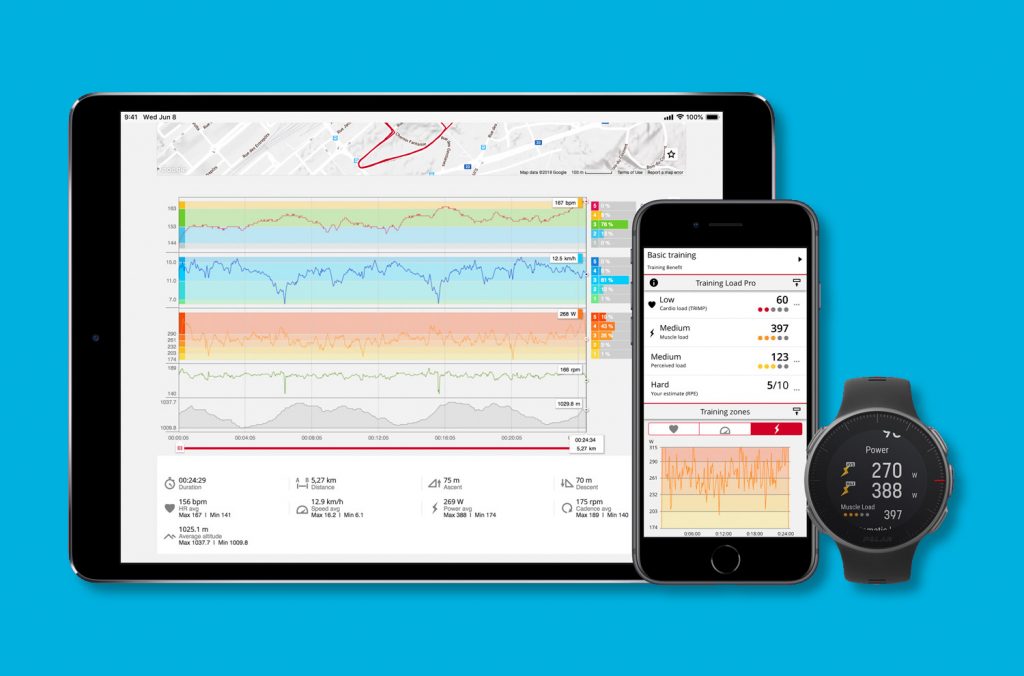I like data and crunching numbers. I’ve always been a geek and nerd. I can’t help it. It’s part of what makes me who I am. So, when my best friend, Antoine, told me about a new fitness wearable he’d purchased and how he was quantifying his fitness, I was intrigued.
It had only been a few months prior when I had taken my daughter to a daddy-daughter dance and felt miserable. I was overweight and could barely fit in my dress clothes. My pants were beyond tight! I’m surprised my button didn’t fly off and put someone’s eye out. When I looked at the pictures we took I was embarrassed at how big I was. I mean, I used to be the kid in high school who couldn’t put on weight to save his life, and now I was tipping the scales at nearly 100 pounds heavier than my high school weight.
For my birthday in February 2014, I decided to make a change. And it began with some birthday gifts to myself.
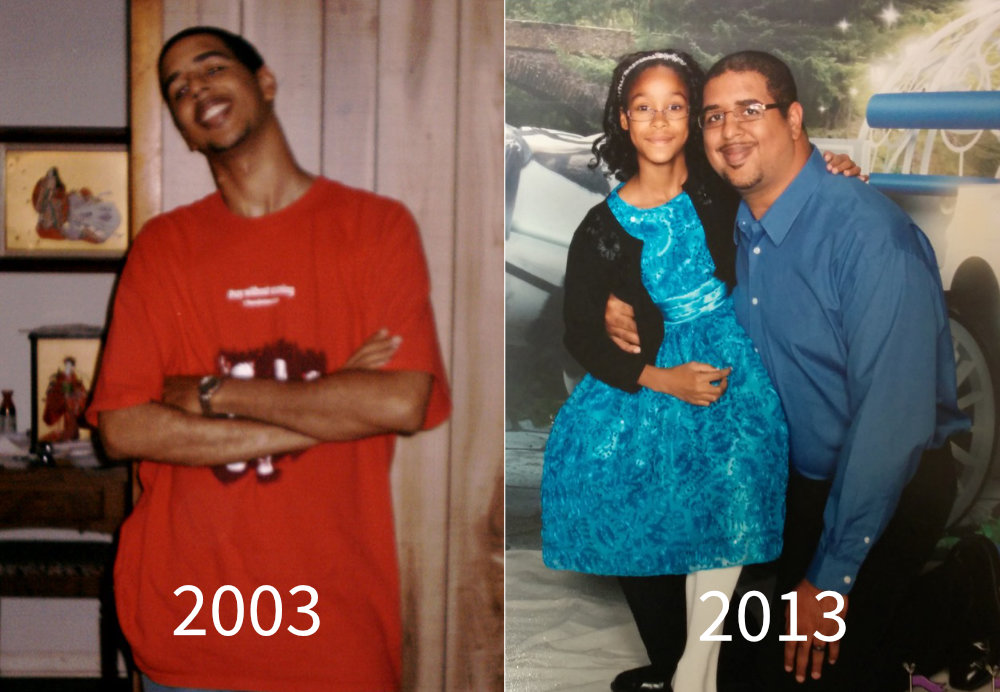
Polar Loop & H7 Heart Rate Monitor
My birthday gifts to myself? An indoor bike, the Polar Loop, and the Polar H7 heart rate monitor. This was my introduction to fitness wearables.
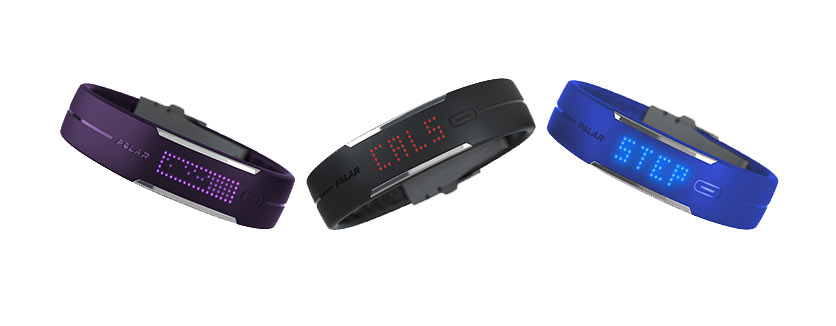
The Polar Loop came recommended by Antoine. I had seen his use with the device and was beyond impressed. It made perfect sense. It was simple & unobtrusive. It looked like a stylish wristband. But, it tracked my steps, daily activity, and sleep. I was able to begin quantifying my fitness in a way that made sense.
In conjunction with the H7 heart rate monitor, I was also able to track my calorie burn during workouts. These workouts primarily consisted of riding the indoor bike I had purchased, but it proved fruitful. Why? Because for the first time I was learning how to train with heart rate in mind. By wearing the heart rate monitor, the Polar Loop was able to tell me when I was in a fat burning zone (which is where I wanted to spend most of my time) or in a zone focused on aerobic fitness. By targeting my workouts to keep my heart rate in a zone that was optimal for losing weight, I was able to quickly drop the pounds. Within six months I went from weighing around 270 to 228 pounds.
All of this was thanks to the Polar Loop.
Polar M400
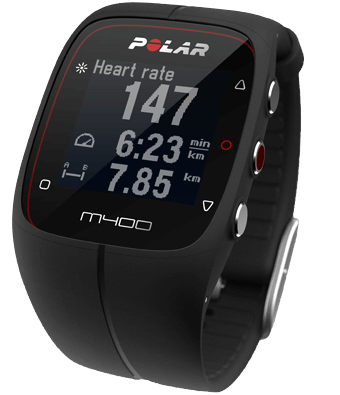
For everything the Polar Loop did great, it was a device I quickly graduated from. As I began to lose weight, I wanted more data and a way to further quantify my workouts. Plus, the battery on the Loop was dying and I’d need to soon replace the device.
A few months after owning the Loop, I had purchased my first bike since being a teen. In conjunction with the H7 heart rate strap, I used apps like Endomondo to track my bike rides with GPS. I eventually grew tired of needing to carry my phone with me to get this data, so I upgraded to the recently released Polar M400 running watch. I purchased this watch in November 2014, only 9 months after purchasing the Loop.
It was a great purchase. I had more power & data at my finger tips. Now, I was no longer limited to fat/fitness zone distinctions. I could now train with my heart rate data in a greater capacity. Plus, I could track my workouts without the need to log a workout on my phone and burn through its battery.
But, my time with the M400 was short-lived once the winter months fully set in and I began riding on a trainer. You see, riding with a trainer is a great way to stay in shape in the winter months, but you still want to quantify your workout. The problem? The M400 was a running watch, so Polar made the decision to not let it connect to cycling speed & cadence sensors, which would’ve given me more data.
So, what did I do? I upgraded!
Polar V800
Only two months into owning the M400, I upgraded to Polar’s flagship and top of the line V800 triathlete watch. No, I had no plans to run a triathlon, but this watch was able to do any and everything I could ever imagine with workout data. I also added Polar’s speed & cadence sensors to my bike, so I could get the most out of my trainer workout sessions.

This watch became my workhorse for nearly two years. Now, I’d love to say I worked out vehemently over those two years, but it became more of a smartwatch on my wrist that also did fitness activities when I needed them. That said, when I needed it, the V800 certainly gave me all the data I needed. Plus, the battery life was amazing. I could go weeks on a single charge. And, even though I wasn’t working out regularly, I was still tracking my daily routine, steps, and sleep, which was important data to have.
Also during this time, I purchased the Polar Balance smart scale, which became a helpful companion in tracking my weight.
I enjoyed having this watch, but as time passed and technology got better, the V800 began to feel dated and there was no new watch in sight from Polar that would replace the V800. Seeing what the competition was putting out, I looked elsewhere. I grew tired of waiting for Polar to release a new flagship that was in line with the current wearable market.
Apple Watch Nike+
Where did I turn? I turned to Nike’s exclusive version of the Apple Watch (series 2). I made the purchase in November 2016 and made a good go with it.

For what it was, the Apple Watch was great. It was a true smartwatch that was the perfect companion to my iPhone. It tracked my heart rate without the need of an external heart rate monitor, had GPS, I could wear it while swimming, and so on. It did everything I used my V800 for and then some.
For me, the Apple Watch only had two serious drawbacks: 1) battery life, and 2) data portability. First, I had to charge this watch at least every other day, which was a far cry from the several weeks between charges for the V800. Then, at the time, all the data was stuck within Apple’s Activity app with no way to really export the data to other platforms. Having used other platforms to track my workout data, this quickly wore on me, and I eventually made the decision to switch back to a dedicated fitness watch, instead of a smartwatch that could also do fitness.
Garmin Forerunner 935
In May 2017, about two years ago, I sold my Apple Watch and purchased the Garmin Forerunner 935. Now, this wasn’t my first Garmin device. Before purchasing the Apple Watch, I had briefly purchased the Garmin Forerunner 735XT to compare it to the V800, but quickly returned it because I was too tied to Polar’s ecosystem.

The Garmin FR935 has been my go to watch for the last couple years. I’ve enjoyed this watch and all the data it has delivered. It too, like the Apple Watch, has a heart rate monitor built-in so it tracks my heart rate data 24×7. It tracks my steps, sleep, workouts, and quantifies all this data for me. There are even training programs and calendars I can use, which have been helpful. And the battery life is similar to what I got with the V800. If I’m honest, there’s nothing to not like about this watch. It does everything and does it well. It’s a true triathlete watch that ticks all the necessary checkboxes, even getting better over time.
Just like Polar, their web service and apps have been vital for quantifying my data and making sense of my fitness goals and plans. Admittedly, much like the V800, it’s been more of a smartwatch with fitness features, instead of something I’ve seriously used for fitness. But, that speaks more of me as a person than it does about the device, because this is something that professional athletes use regularly.
Polar Vantage V: Back to Polar
If I’m content with what my Garmin Forerunner 935 can do, why am I switching? Well, it’s not out of need, let’s be clear about that.
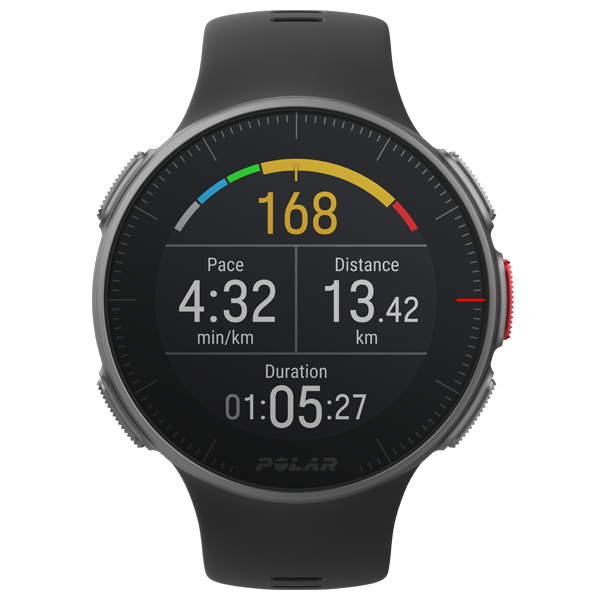
To be honest, when Polar announced their new watches in September 2018 (with an October release date), my immediate thought was, “It’s about time!” It had been more than 4 years since Polar released the V800, and now they were finally releasing a new flagship wearable. By comparison, Garmin had been putting out new devices almost annually, even if the updates were minor. But, I wasn’t about to buy one because I didn’t see the need for it and was content.
Yet, my contentment didn’t stop me from reading reviews. DC Rainmaker is one of the blogs I frequent regularly and I trust his view on such devices. So, when I read his first thoughts, I knew it wasn’t anything I needed. The watch had new features, lacked features from the V800, and still had lots of catchup to do. No way was that anything I would be interested in. Read his full review here.
Now it’s April 2019 and I have a Polar Vantage V (with H10 heart rate monitor) on the way. What changed?
Time? Yes. In recent weeks I’ve read more reviews (specifically Titanium Geek & the 5k Runner) and saw that others had a more favorable view of the watch, especially after giving Polar time to get firmware updates out. Both of these reviewers were pretty dedicated Garmin users who were switching to the Polar Vantage, so I looked at their words with a proverbial fine toothed comb. I wanted to know why they made the switch and it influenced my decision. Plus, I made time to watch all the promotional videos on Polar’s YouTube channel, which provided further information.
Was it nostalgia? Maybe. When I look back, the most success I’ve had in my fitness journey came with Polar’s wearables. And the only reason I switched from the V800 to something else is because I grew tired of waiting for something like the Vantage V to come out. Now that it’s finally here, I don’t have a reason to not be back with Polar. I’ve even been diligent in making sure I kept my Apple & Garmin workouts transferring into Polar Flow (thanks to RunGap), so I have a full archive of my fitness history in Polar’s platform.
Was it data? Definitely. Polar wins hands down when it comes to quantifying and displaying your workout data in a meaningful way. Garmin Connect is cool, but it’s not the best when I want to drill down into my individual workouts and segments of a given workout. I’m better off exporting my data to something like SportTracks (which I do hope to one day be able to pay for) and examining my data there. With Polar I don’t have to do that. I can look at all my data the way I need to from within Flow and it gives me the data that’s most valuable for making progress. Yes, Polar still struggles with exporting and syncing with external services, but that’s minor in the grand scheme of things. With my data in Flow it just works.
That is why I’m switching back to Polar. Time, nostalgia, and data. I’m moving forward with Polar, a small Finnish company that is pioneering the way forward with fitness wearables.
Part 2: Why I Chose Polar & the Vantage V
This post was all about sharing my history with fitness wearables. In my next post I will talk specifically about the reasons and decision making process that went into making the switch from Garmin back to Polar. Then, in a third post I will detail the ways I plan to use Polar’s devices & platform going forward.
